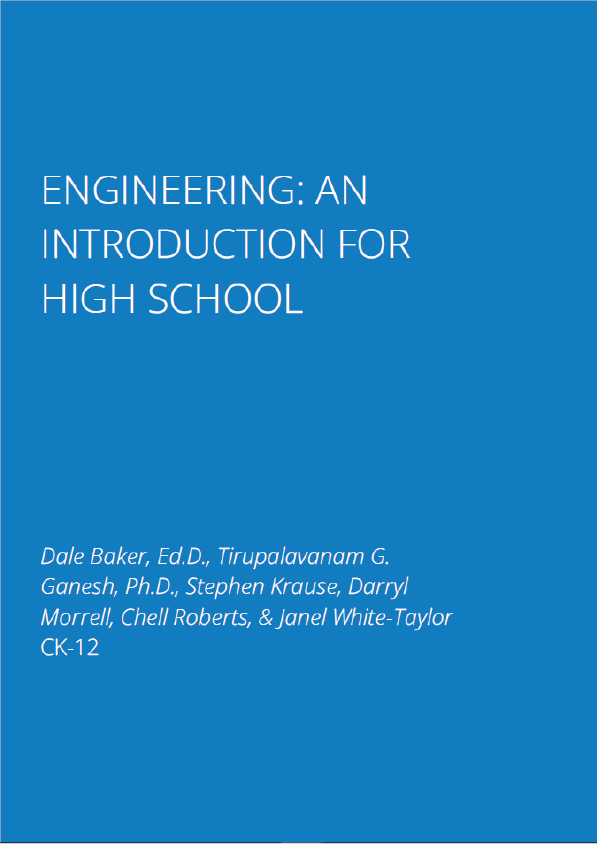Much of our modern society depends on engineered artifacts to function, but many members of modern society are not aware of the engineering techniques and practices that have developed the technology and infrastructure on which we rely. iPods, cell phones, airplanes, bridges, buildings, vehicles, computers, etc. are designed and created by engineers. This textbook introduces engineering techniques and practices to high school students. The goals of this book are to help students gain an appreciation for engineering and its role throughout human history, understand what engineers do, understand the skills and processes engineers bring to their work, and appreciate how the work of engineers shapes and is shaped by their society. The authors hope that this book may inspire students to pursue a career in engineering.
This book is a Flexbook® textbook-an open-source book developed with the support of and within the context of CK-12’s mission; the Flexbook® format allows the book to be customized for multiple audiences. This engineering text is a living document that can be updated, expanded, and repurposed as necessary to support specific standards and classroom needs.
The text is written to meet draft ASEE K-12 standards for engineering. Each chapter corresponds to an outcome in the draft standard. While the standards have not yet been finalized and formally adopted, the Flexbook® format allows the text to evolve in response to changes in the standards, so that the text’s content and structure will fully support them.
The text was collaboratively written by university engineering and education faculty members at Arizona State University. The text currently has four content chapters that cover the nature of engineering, engineering and society, engineering design, and the connection between engineering, science, and mathematics.
The authors are grateful to CK-12 for providing the infrastructure and support that has made this textbook possible. We see this book as a seed, and hope that it becomes a starting point on which others can build.
This chapter explores the nature of engineering. As you read this chapter, you will discover: what engineers do; some of the skills needed to be an engineer; various types of engineering careers and specializations; the educational requirements to be an engineer; licensure of engineers; the impact engineering has had on society; and some possible scenarios for the future of engineering.
Chapter Learning Objectives
After working through this chapter, you should be able to
- describe what engineers do,
- describe the education and skills necessary for engineering,
- describe the impact of engineering on society.










